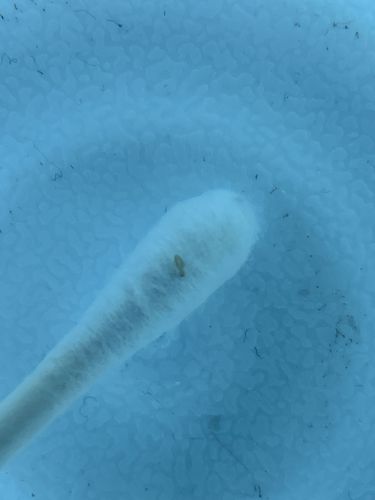Fruit Fly Larva (Maggot)
Scientific Name: Drosophila melanogaster (for common species), though other 'fruit fly' species exist.
Order & Family: Order: Diptera, Family: Drosophilidae
Size: Larvae (maggots) are usually 2-5 mm long.

Natural Habitat
Typically found in decaying organic matter, especially fruits and vegetables, and other fermenting substances. Often associated with human dwellings.
Diet & Feeding
Feeds on yeast and bacteria found in decaying fruits and vegetables, as well as microorganisms present in other fermenting organic material.
Behavior Patterns
The larvae spend their entire larval stage within their food source, constantly feeding and growing. They are legless and move by crawling and contracting their bodies. Once mature, they pupate, usually in a drier location nearby, before emerging as adult fruit flies.
Risks & Benefits
Risks: Can be a nuisance pest in homes and commercial settings, contaminating food with their presence and potentially spreading spoilage microorganisms. Benefits: Widely used in scientific research, particularly genetics and developmental biology, due to their short life cycle, ease of rearing, and well-understood genome.
Identified on: 9/22/2025